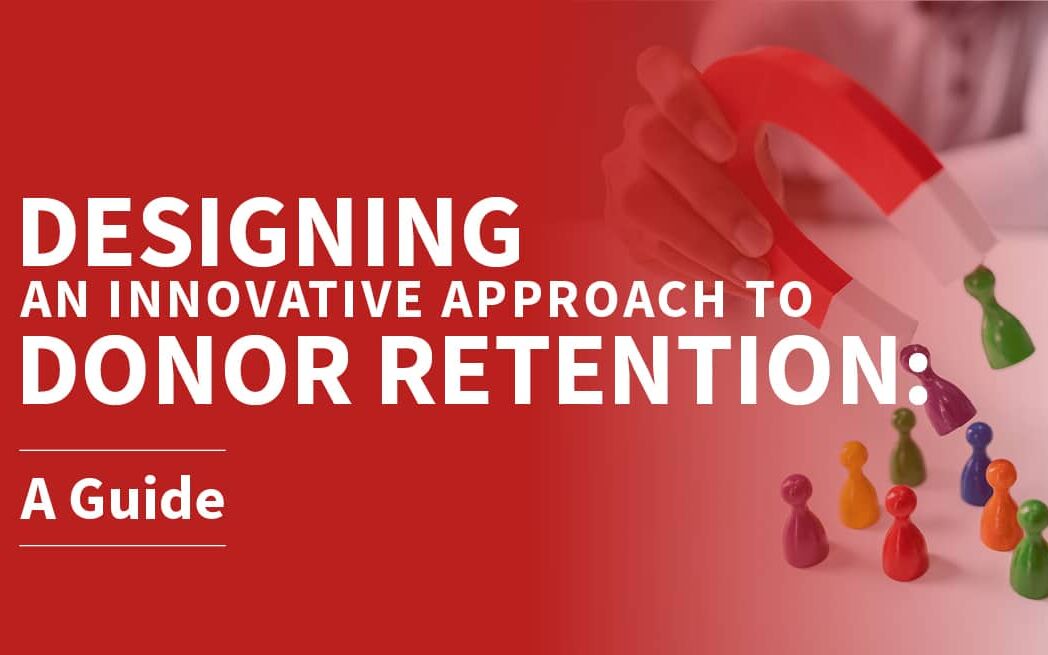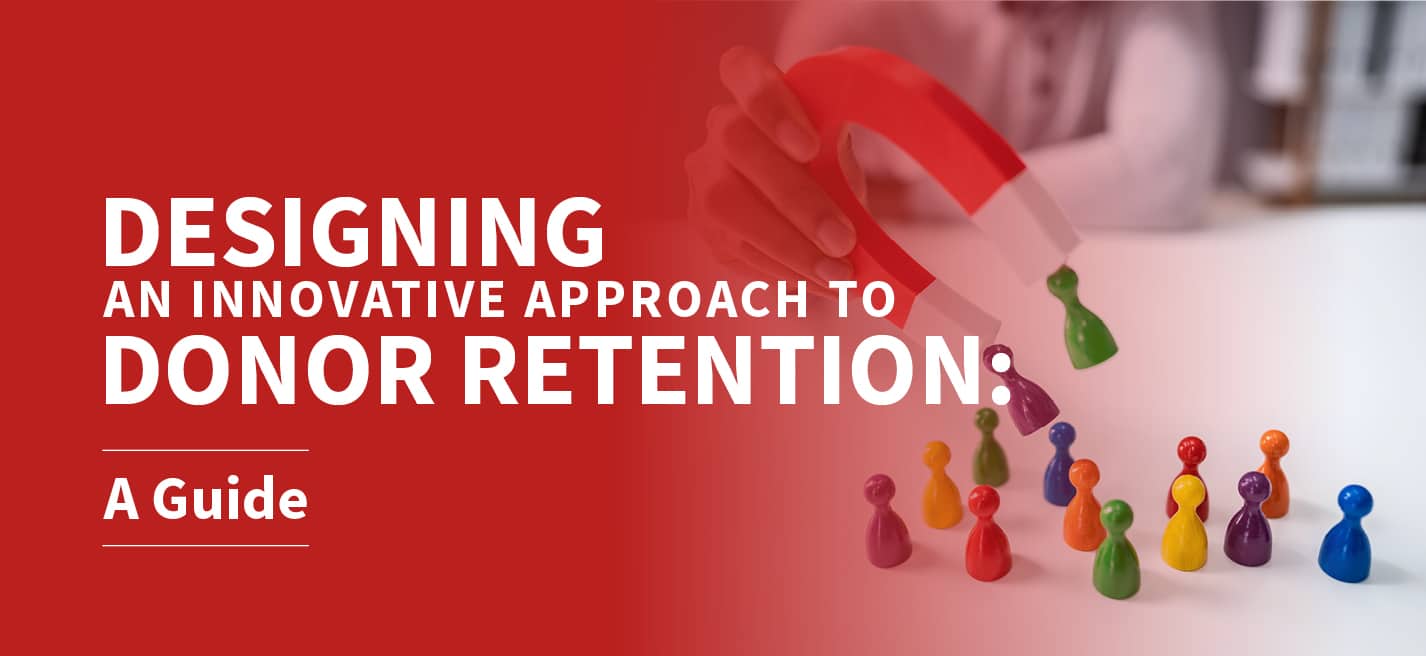
Designing an Innovative Approach to Donor Retention: A Guide

There’s a lot that goes into acquiring a donor for your nonprofit. You have to research your target audience, raise awareness about your mission, engage prospective donors, and then ask them to give when the time is right.
Along the way, you’ll lay the foundation for a lasting relationship that can benefit your organization for years to come—if you have the right donor retention approach on your side to strengthen and maintain that relationship.
In this guide, we’ll walk through some strategies you can use to design an innovative approach to donor retention:
- Prioritize donor appreciation.
- Demonstrate individual impact.
- Encourage non-traditional forms of giving.
- Invite donors to engage in other ways.
Prioritizing donor retention will make your nonprofit more resilient to change and challenges and help you demonstrate that you value every individual who gives to your mission. As you design your approach, consider working with a fundraising consultant who can provide an expert, third-party perspective on your strategies and help you take your efforts to the next level. Let’s begin.
The Benefits of Donor Retention
Before we dive into the specific strategies for innovative donor retention, let’s establish why retention is so important and should be top of mind for your team. According to Averill Fundraising Solutions, donor retention offers a wealth of benefits, including:
- Stable source of revenue: Financial stability is essential for your organization’s long-term health and growth. When you retain your donors, you can be confident they’ll provide support for your mission for years to come.
- Increased donor lifetime value (DLV): DLV is a metric that tells you how much value a donor will provide to your organization throughout their life. It is calculated by multiplying the average length of time as a donor by the average donation amount and then multiplying the resulting number by the average donation frequency. As your donors actively give over the years, and you take opportunities to encourage them to give more and to do so frequently, you can increase the value the average donor brings to your organization over their life.
- Flexibility to work toward long-term goals: When your organization has a steady source of fundraising revenue from a community of committed donors, you can worry less about keeping your operation afloat and turn your attention to other projects that will help further your long-term goals.
A solid donor retention strategy can also help you acquire new donors. As you develop a reputation as an organization that cares about the people that support its mission, more and more donors will be drawn to your community. Donor retention is part of a healthy fundraising and relationship-building cycle and is well worth the effort to get right!
Now, let’s jump into four strategies you can weave into your own donor retention approach:
Prioritize donor appreciation
To be encouraged to give again, donors need to know that your nonprofit views and values them as unique individuals and appreciates their generosity. You can demonstrate this through thoughtful donor appreciation efforts.
While you can use traditional methods like handwritten thank-you letters or phone calls, consider trying something new, like creating a personalized thank-you video, having a donor’s favorite flowers delivered to their home, or gifting them branded merchandise, like a t-shirt or hat with your nonprofit’s logo.
No matter what form your appreciation takes, here are a few tips to ensure your thank-you messages stand out:
- Use donors’ preferred names in your messages.
- Call out each individual’s donation amount and what the money will be used for.
- Include a signature or message from one of your team members to make your message more personal.
Demonstrate individual impact
Your donors need evidence that their donations are truly making a difference for the beneficiaries your organization serves. In other words, they need to know their gifts are making an impact.
Impact reporting is more powerful when you have data to back up your claims. For instance, some constituent management relationship (CRM) systems like Salesforce Nonprofit Cloud can help you track the progress you make toward your goals and the benefits you deliver to those you serve.
This means that instead of simply saying, “Your donation helped our team deliver more food to hungry families last year,” you can actually quantify the impact donors had by saying something like, “Your donation helped our team deliver 4,500 pounds of food to hungry families last year.” Statements like these are much more powerful for showing your donors that their support matters.
Here are a few tips for sharing impact information with your donors:
- Use data visualizations (like charts, graphs, and infographics) to bring cold, hard numbers to life.
- Don’t overlook the value of qualitative data (like testimonials or even before and after photos) that can add color to your impact data.
- Focus on the future, letting donors know what you plan to do next and how they can help!
Encourage non-traditional forms of giving
There are many other ways to contribute besides giving a cash gift or using a credit card on a digital donation page. Embracing different forms of giving is essential for taking full advantage of current giving trends, expanding your revenue sources, and accommodating donors’ preferences and interests (including helping them take advantage of tax benefits).
To encourage non-traditional donations, educate your donors about the types of donations your organization accepts. Also, explain how to kickstart this unique donation process, which will usually require a donor to talk to their financial advisor.
Here are a few different types of non-traditional giving you may want to highlight:
- Donor-advised funds (DAFs), which are charitable funds donors contribute to and then recommend organizations to receive grants from
- Cryptocurrency, which are virtual forms of money like Bitcoin and Ethereum
Qualified charitable distributions (QCDs), through which IRA owners who are older than 70 can donate up to $100,000 directly from their IRA to a charitable organization
Invite donors to engage in other ways
While you want your donors to continue to give to your organization over time, you don’t want them to feel like walking ATMs. To maintain the relationships you’ve built with your donors over time, invite them to get involved with your mission in other ways.
Not only will this add variety to how they contribute to your mission, but it will also encourage them to deepen their involvement with your organization as they see different aspects of your operations and get to know your team and beneficiaries better.
Here are some opportunities your donors may be interested in:
- Joining your volunteer program
- Participating in advocacy work
- Sharing about your organization on social media
- Attending fundraising events
- Serving on your board of directors (for major donors)
- Participating in a feasibility study ahead of a capital campaign or other large project (for major donors)
When you receive a donor’s first donation, it can be tempting to say, “Mission accomplished!” However, the most successful nonprofits will view initial donations as just the start of a long-lasting relationship between the organization and its donors.
Use the strategies above to design an innovative approach to donor retention and lay the foundation for strong relationships. You’ve got this!

